Ukraine (Ukrainian: Україна) is a large country in Eastern Europe.
- Kiev. (Київ, Kyiv) – The beautiful Ukrainian capital, home to leafy hills and world-famous Orthodox and Baroque architecture.
- Chernihiv. (Чернігів or Чернигов, Chernigov) – ancient city of Kyivan Rus', one of the oldest cities in Ukraine, has lots of Medieval architecture.
- Chernivtsi. (Чернівці́, Černivci) – the capital of Bukovina offers a Balkan atmosphere mixed with fine classical Habsburg architecture.
- Dnipro. (Дніпро) – the highlight is the mile long promenade on the river Dnipro.
- Donetsk. (Донецьк) – an industrial city in eastern Ukraine on the Kalmius River.
- Kamianets-Podilskyi. (Кам’янець-Подільський) – ancient city-fortress
- Kharkiv. (Ха́рків) – kozak metropolis, it was the capital of Soviet Ukraine for fifteen years.
- Lviv. (Львів) – the second most-visited city in the country. Some Polish, some Austrian mixed with Russian almost in everything. Famous medieval old town.
- Odessa. (Оде́са) – a harbour city on the Black Sea with a mixture of different cultures.
Kiev. (Київ, Kyiv) – The beautiful Ukrainian capital, home to leafy hills and world-famous Orthodox and Baroque architecture.
Chernihiv. (Чернігів or Чернигов, Chernigov) – ancient city of Kyivan Rus', one of the oldest cities in Ukraine, has lots of Medieval architecture.
Chernivtsi. (Чернівці́, Černivci) – the capital of Bukovina offers a Balkan atmosphere mixed with fine classical Habsburg architecture.
Dnipro. (Дніпро) – the highlight is the mile long promenade on the river Dnipro.
Donetsk. (Донецьк) – an industrial city in eastern Ukraine on the Kalmius River.
Kamianets-Podilskyi. (Кам’янець-Подільський) – ancient city-fortress
Kharkiv. (Ха́рків) – kozak metropolis, it was the capital of Soviet Ukraine for fifteen years.
Lviv. (Львів) – the second most-visited city in the country. Some Polish, some Austrian mixed with Russian almost in everything. Famous medieval old town.
Odessa. (Оде́са) – a harbour city on the Black Sea with a mixture of different cultures.
- Carpathians.
- Chernobyl. (Чорнобиль, Chornobyl) – tour the site of the 1986 nuclear disaster
- Uman. - city in central Ukraine with the famous Sofiyivka Park
- Wooden tserkvas of the Carpathian region. - Orthodox churches
See also UNESCO World Heritage List, Ukraine section
Carpathians.
Chernobyl. (Чорнобиль, Chornobyl) – tour the site of the 1986 nuclear disaster
Uman. - city in central Ukraine with the famous Sofiyivka Park
Wooden tserkvas of the Carpathian region. - Orthodox churches
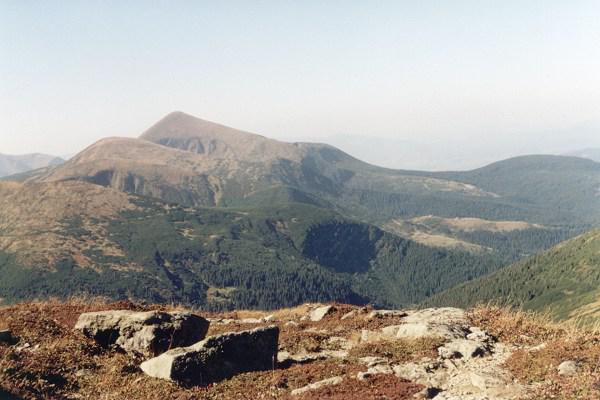 Most of Ukraine (the central and eastern portions) was formerly a part of the Russian Empire; after the October Revolution and the Civil War, the entire country, known as the Ukrainian Soviet Socialist Republic, was a part of the Soviet Union. Ukraine is the second-largest country in Europe, albeit with one of the most rapidly declining populations of any large country due to high emigration, low immigration, early deaths (particularly amongst males) and a shrinking birthrate that was already below replacement levels.
Most of Ukraine (the central and eastern portions) was formerly a part of the Russian Empire; after the October Revolution and the Civil War, the entire country, known as the Ukrainian Soviet Socialist Republic, was a part of the Soviet Union. Ukraine is the second-largest country in Europe, albeit with one of the most rapidly declining populations of any large country due to high emigration, low immigration, early deaths (particularly amongst males) and a shrinking birthrate that was already below replacement levels.

Ukrainian history is long and proud, with the inception of Kyivan Rus (possibly founded by Swedish Vikings) as the most powerful state in Medieval Europe. While this state fell prey to Mongol conquest, the western part of Ukraine became part of the Polish-Lithuanian Commonwealth from the 14th until the 18th century, even modern Ukraine owes it a debt of sorts. A subsequent Ukrainian state was able, in the face of pressure from the ascendant Muscovy, to remain autonomous for more than a century, but the Russian Empire absorbed much of Ukraine in the 18th century to the detriment of their culture and identity.
Despite a brief, but uncertain, flash of independence at the end of the czarist regime, Ukraine was incorporated into the new USSR after the Russian Civil War in 1922 and subject to two disastrous famines (1932-33 and 1946) as well as brutal fighting during World War II. As a Soviet republic, the Ukrainian language was often 'sidelined' when compared to Russian to varying degrees; Stalinist repressions during the 1930s, attempts at decentralisation during the Khrushchev administration and the re-tightening of control during the Brezhnev-Kosygin era of the 1970s and early 1980s. In any case, the traditionally bilingual province had signs in both Russian and Ukrainian in virtually all cities, including Lviv, where Ukrainian is most prevalent. The 1986 Chernobyl accident was a further catastrophe for the republic but also widely considered as an event which, in the long run, galvanized the population's regional sentiment and led to increasing pressure on the central Soviet government to promote autonomy.
Ukraine declared its sovereignty within the Soviet Union in July 1990 as a prelude to unfolding events in the year to come. The Verkhovna Rada (Ukraine's Parliament) again declared its independence in early December 1991 following the results of a referendum in November 1991 which indicated overwhelming popular support (90% in favour of independence). This declaration became a concrete reality as the Soviet Union formally ceased to exist on 25 December 1991. Initially, severe economic difficulties, hyperinflation, and oligarchic rule prevailed in the early years following independence. The issues of cronyism, corruption and alleged voting irregularities came to a head during the heavily-disputed 2004 Presidential election, where allegations of vote-rigging sparked what became known as the "Orange Revolution". This revolution resulted in the subsequent election of opposition candidate Viktor Yushchenko as President. During the ongoing five years the "Orange coalition" broke up and Viktor Yushchenko lost the support of majority of Ukrainians. Ironically, his former adversary Viktor Yanukovich was elected President; ultimately the pro-Russian Yanukovich was ousted in early 2014 after months of popular protest against his failure to complete a key trade agreement with the European Union, but his departure comes at a time when the nation's treasury is empty and the government in disarray.
Ukrainian is the official language. Near the neighbouring countries, Russian, Romanian, Polish, and Hungarian are spoken. Russian is a close relative of Ukrainian and is most often the language of choice in the south and east of Ukraine. It is safe to assume that virtually any Ukrainian will understand Russian; however, in the western parts people may be reluctant to help you if you speak Russian, though to foreigners, Ukrainians will be more forgiving than to Russians. Especially in Lviv, you will have the hardest time because they not only mostly speak Ukrainian but they have a special dialect of their own.
On the other hand, in the eastern parts, Russian is the most commonly spoken language. In the central and eastern parts of the country, you may also find people speaking transitional dialects (generically referred to as the surzhyk, i.e. the "mix [of languages]"). It is also common for people to talk to others in their native language, irrespective of the interlocutor’s one, so a visitor speaking Russian may be responded to in Ukrainian and vice versa.
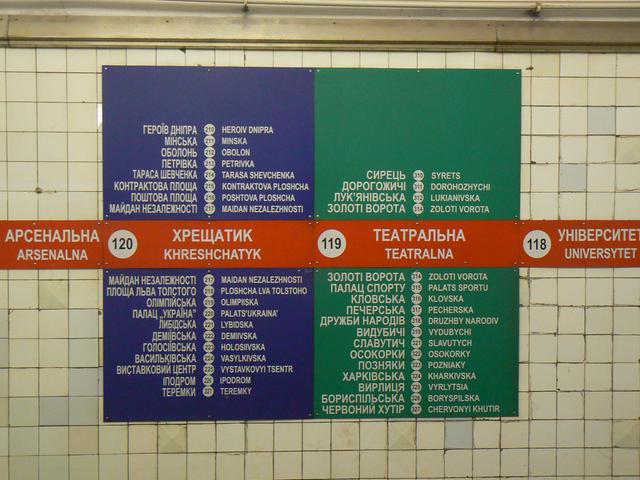 Kiev, the capital, speaks both languages, but Russian is more commonly used. So Ukrainian is more frequently met in Central and Western Ukraine, Russian in Eastern and Southern Ukraine.
Kiev, the capital, speaks both languages, but Russian is more commonly used. So Ukrainian is more frequently met in Central and Western Ukraine, Russian in Eastern and Southern Ukraine.
Young people are more likely to speak a little English, as it is the most widely taught foreign language in school. Most people in the tourism industry (hostels etc.) do speak English. Also, thanks to Ukraine hosting the Euro 2012, there was a lot of improvement in tourist facilities and police learning English to better assist the people there for the games.
In general, Ukrainian is gaining more ground as time goes on. Certain regions may have special rules and can have schooling in Russian like in Luhansk. Russian is in general still the lingua franca but the newer generation of people are encouraging their children to speak Ukrainian in the home. The biggest wall to Ukrainization is that there is a resistance in the East and South from people who would even like Russian to be an official language of the state. Moreover, a lot of media such as books, videos, and video games are only in Russian but there have been a few titles with the option of Ukrainian subtitles on DVDs and some authors write exclusively in Ukrainian, so it is making ground. Universities used to have a choice between Ukrainian or Russian but now most of the national universities except those in special areas or private schools are exclusively taught in Ukrainian. There are plenty of people, however, that believe Ukraine will always have both languages and don't feel one threatens the other's existence.
Though everyone there is Ukrainian by citizenship, there are more than a million who are of Russian origin; for example Kharkiv itself sports 1 million ethnic Russians. It's hard to say they are really ethnically different, but they did migrate during the Soviet Union and are proud of their roots as Russians and continue speaking Russian with their kids even though their kids are getting an education in Ukrainian. The whole language thing in Ukrainian is a touchy subject, so hopefully the information provided seems neutral.
If you are travelling to Ukraine, learn either basic Ukrainian or basic Russian beforehand (know your phrasebook well) and/or have some means of access to a bilingual speaker—a mobile/cell number (almost everyone has a mobile phone) can be a godsend. Virtually nobody in any official position (train stations, police, bus drivers, information desks, etc.) will be able to speak any language other than Ukrainian and Russian. If you already know another Slavic language, you will, however, be able to communicate as the Slavic languages are closely related.
It is a good idea to familiarize yourself with the Cyrillic alphabet to save you a lot of time and difficulty. Knowing the alphabet helps a lot, because certain words are close to English, like telefon (telephone), so if you can read the Cyrillic alphabet you'll understand them.
| А - A Б - B В - V Г - G Д - D Ж - Zh З - Z | И - I Й - Y К - K Л - L М - M Н - N О - O | П - P Р - R С - S Т - T У - U Ф - F Х - Kh | Ц - Ts Ч - Ch Ш - Sh Щ - Shch Ь - ' Ю - Yu Я - Ya |
| Ukrainian language | Russian language | ||
| Ґ - G Е - E Є - Ye І - I Ї - Yi | E - Ye Ё - Yo Ъ - ' Ы - I Э - E |
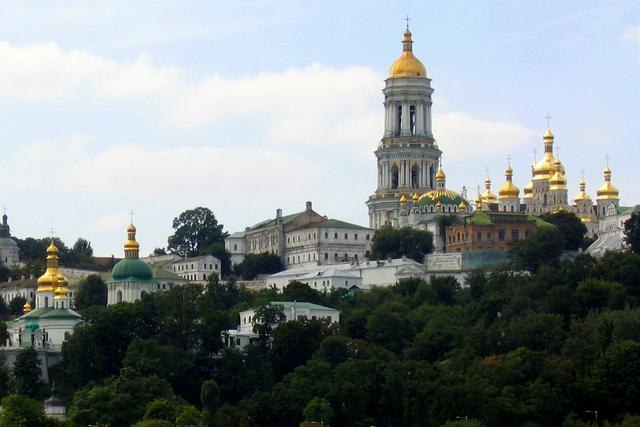

 Vast in size and diverse in culture and landscapes, Ukraine has a range of great attractions to offer. Largely unknown to the world, the country's main draws include some great and quintessentially Slavic cities, impressive cultural heritage and of course top class natural areas.
Vast in size and diverse in culture and landscapes, Ukraine has a range of great attractions to offer. Largely unknown to the world, the country's main draws include some great and quintessentially Slavic cities, impressive cultural heritage and of course top class natural areas.
Head to the historic city of Lviv, listed as a Unesco World Heritage Site but still a bustling place and a true centre for learning and culture in the country. Its cobblestoned streets are packed with monuments going back to Medieval times, seemingly untouched by the destructive force of wars that have changed some of Ukraine's other cities so thoroughly. Even the extensive Soviet planning that has shaped many other places on the far east side of Europe have left only a minimal mark on the colourful mix of building styles. Highlights include the Korniakt Palace (right on the market square) and several beautiful churches. For an even more sophisticated taste of culture, try the fine collection of the Lviv National Art Gallery.
Then there's the must-see's of Kiev, a colourful place where the golden roofs of the Unesco World Heritage sites Saint-Sophia Cathedral and Pechersk Lavra make for some excellent highlights. Take an afternoon stroll through Andriyivsky Uzviz, the Montmartre of Kiev, where you'll find a bustling mix of artist and souvenir sellers. Follow in the footsteps of Apostle Andrew, who - according to legend - climbed the steep stairs of this bohemian neighbourhood two thousand years ago, to the top where you'll now find a church with his name. Don't miss the excellent Pyrohovo Museum of Folk Architecture. Last but not least, Kiev is one of the best spots to visit Ukraine's lively markets (but Odesa or Kharkiv have good ones too). Also, consider a trip to the Residence of Bukovinian and the Dalmatian Metropolitans in Chernivtsi.
In terms of natural attractions, the lovely Carpathian Mountains are among the best destinations this otherwise remarkably flat country has to offer. They hold beautiful panoramas of forested hills, lush valleys and snowy peaks and offer ample opportunities for hiking and biking as well as for winter sports. The rather little explored Danube Delta Biosphere Reserve is another great pick for nature lovers and bird watchers. Base yourself in the charming town of Vylkovo, with its many canals, and go boating and bird-watching during the day.
- Hike in Carpathian Mountains around Rakhiv
- Conquer 2,061m Hoverla, part of the Chornohora mountain range
- Kayak down Dniester and admire Kamianets-Podilskyi and Khotyn castles
- Visit one of forty National Parks (total area more than ten thousand km²)
Hike in Carpathian Mountains around [[Rakhiv]]
Conquer 2,061m Hoverla, part of the Chornohora mountain range
Kayak down Dniester and admire [[Kamianets-Podilskyi]] and Khotyn castles
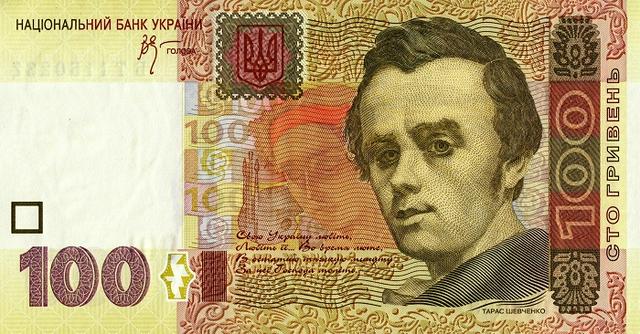
The unit of currency is the hryvnia denoted by the symbol "грн" (90% of the time) and "₴" (10% of the time). The ISO code is UAH. It is spelt гривня and pronounced hryvnia in Ukrainian and grivna in Russian. Just to make it a little more confusing, Russian speakers in the east often refer to it as ruble and it is sometimes shown as "₴" both before and after the amount and with and without spaces. National Bank actual rates. On Wikivoyage, the notation грн is used, which you will see very often in Ukraine. (It can be found in the currency list underneath the editor window.)
It is widely acceptable to pay cash. Locals (especially businesspeople) sometimes carry and pay in cash amounts considered unusually large in other countries. Don't suspect criminal activity in every such case. The euro and US dollar are generally accepted as alternative forms of currency, particularly in tourist areas.
You can use your credit cards (mostly MasterCard & Visa) or cash traveler's cheques easily. Credit and debit cards are accepted by the supermarkets. But avoid using your credit/debit cards for payments at establishments in smaller towns as retailers are not trained and controlled enough to ensure your card privacy.
Ukraine is a predominantly cash economy. The network of bank offices and ATMs (банкомат, bankomat) has grown quickly and are now readily available in all but the smallest villages. Do check the security of the machine - it would be wise to use one that is obviously at a bank, rather than in another establishment. So, ATMs are common throughout the country and generally work with international cards. They nearly always dispense hryvnia, though you may find some give US dollars. They mostly do not charge fees to foreign cards. (unless you are withdrawing dollars).
Debit cards such as maestro do work in ATMs. Cirrus/Maestro/Plus bank cards could be most effective way to get cash in Ukraine. Not all ATMs indicate that they support the Plus system, but in most cases they do support it if they support Visa. PrivatBank ATMs indicate that they support Plus, but they do not work with North American cards.
Every reasonably sized town will have exchanges booths and banks that will convert euro, US dollars or Russian rubles to hryvnia, just look for signs with exchange rates. US dollars and euro are the most widely accepted convertible currency at the exchange booths, with Russian rubles now in third place. Exchange booths, while looking rather unsavoury, are generally the best places to change money. Their rates tend to be better than the banks' (but not always) and you will not need your passport. Service is quick and there's often no paperwork or receipts. British pounds are also often exchangeable, though at poor rates. In tourist areas, a much wider range of currencies can be changed. Shop around as offered rates often vary.
Changing money in banks is time consuming—there is a lot of paperwork involved. Bank staff may be unwilling to go through all the procedures just to change your US$100 bill and may try to fob you off with an excuse: "sorry, we don't have the money" is common. If you absolutely must change money there, you might be able to persuade them to change their minds; but if you can go somewhere else, you'll probably save time. At a bank, you will also need to show your passport. Banks may also only let you buy hryvnia; they may prevent you from buying "hard" currency. At many places bank clerks would refuse money with even minor damages or grease spots. A tear in the paper longer than five millimetres can be too much.
Even at larger branches, you cannot expect English-speaking staff. Doing anything other than currency exchange may require a translator or at least a lot of patience.
Booths and banks will generally not try to scam you, but count your notes to be sure.
By law, all transactions are required to be in hyrvnia, although less formal transactions may be in euros or US dollars.
If you want to buy any kind of artwork (paintings, Easter eggs) in Kiev, the place to visit is Andriivskij Uzviz (Андріївський узвіз in Ukrainian, Андреевский спуск in Russian).
It is illegal to take out of the country any items of historical importance. These includes badges, medals, icons, historical paintings, etc. While you are unlikely to face a bag search, don't wear any old badges or display anything that may arouse suspicion.
Ukrainian cuisine is quite tasty, with similarities to Russian cuisine. Just like other cuisines in the region it uses a lot of fat ingredients, especially in festive dishes. Traditional local food includes "salo" (salted lard) and soups like "solianka" (солянка in Ukrainian, meat soup) or "borshch" (борщ in Ukrainian) a soup made of red beets. Western Ukraine also has a green version of borshch, with greens and boiled eggs. The first, salo, is perhaps something you might not make yourself try - however is a delicious side dish, as for the soups being a must-have dish.
If you are outside a big city or in doubt about food, exercise caution and common sense about where you buy food. Try to buy groceries only in supermarkets or large grocery stores, always check the expiration date, and never buy meat or dairy products on the street (you can buy them at the market but not near the market).
In most towns in Ukraine there are some very good restaurants. Read the menu boards posted by the entrance of every establishment to help you to choose.
You may also find nice places to eat not by signs, but just by the smoke of traditional wood fires. These are often places where they serve traditional Ukrainian food, including very tasty shashlyky (шашлики in Ukrainian). Restaurateurs are very friendly, and, more often than not, you will be one of their first foreign visitors. Next to the "borshch", you might also ask for "varenyky" (вареники in Ukrainian, dumplings filled with meat, vegetables or fruits) or "deruny" (деруни, potato pancakes). You have to try varenyky with potatoes and cottage cheese in a sautéed onion and sour cream sauce, a fantastic dish. These are just starters, but ones that might fill you up quickly.
You can also use some internet services, which will help you to find any restaurant you want. They usually have a lot of options and English translation making your search easier. These services are free and provide information about major cities. If there is no possibility of internet connection you can ask people about restaurants, but remember that knowledge of English among Ukrainians is low and you can also meet unfriendly people. But in most cases English or other foreign language makes people more amiable.
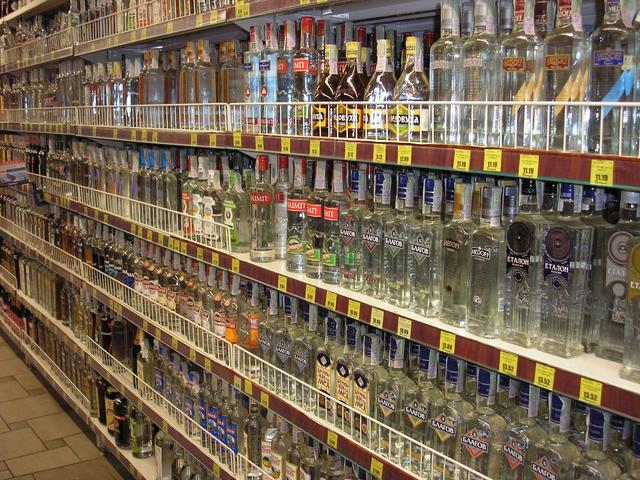 The Ukrainian speciality is horilka (the local name for vodka) with pepper. Other kinds of vodka are also quite popular - linden (tilia), honey, birch, wheat. Prices range €1-20 for 1 L. Souvenir bottles are available for higher prices (some bottles reach upwards of €35 for 0.5 L. There is a great choice of wine, both domestic and imported. The domestic wines mostly originate in the south, although wines from the Carpathian region of Uzhorod are also quite tasty. Ukraine is also famous for it's red sparkling wines. Prices for local wine range €2-35 per bottle of 0.75 L (avoid the cheapest wines, €1 or less, as these are sometimes bottled as house wines but sold as local vintages), however, one can find genuine Italian, French, Australian wines from €50 per bottle and more in big supermarkets and most restaurants. The price of imported wines dropped significantly over the last number of years and trends indicate further reductions in price.
The Ukrainian speciality is horilka (the local name for vodka) with pepper. Other kinds of vodka are also quite popular - linden (tilia), honey, birch, wheat. Prices range €1-20 for 1 L. Souvenir bottles are available for higher prices (some bottles reach upwards of €35 for 0.5 L. There is a great choice of wine, both domestic and imported. The domestic wines mostly originate in the south, although wines from the Carpathian region of Uzhorod are also quite tasty. Ukraine is also famous for it's red sparkling wines. Prices for local wine range €2-35 per bottle of 0.75 L (avoid the cheapest wines, €1 or less, as these are sometimes bottled as house wines but sold as local vintages), however, one can find genuine Italian, French, Australian wines from €50 per bottle and more in big supermarkets and most restaurants. The price of imported wines dropped significantly over the last number of years and trends indicate further reductions in price.
There are a lot of other beverages too(both alcoholic and non-alcoholic). Ukrainian beer is of very good quality. Beer from barrels or kegs (more common in cafes) is often watered down. Canned beer is not very common in Ukraine and sometimes not of the same quality as the same variety sold in bottles. The best beers are brewed by Lvivske, Obolon and PPB (Persha Privatna Brovarnia). Imported beers are also widely available but more expensive – for instance, a bottle of Austrian Edelweiss can cost upwards of €2 while average price of Ukrainian beer is €0.50. All told, Ukrainian beers are very tasty and gaining popularity elsewhere in Europe.
Of non-alcoholic beverages, one should try kvas – a typically Slavic drink made of rye or wheat. During the summer one can easily buy it from designated street vendors. There are a lot of yellow barrels with kvas around the city in summer. It’s better to buy it in bottles due of unknown cleanness of the barrel. Milk drinks, of all sorts, are also available, although mostly in supermarkets. Bottles of mineral water are available everywhere, as well as lemonades, beer, and strong drinks. When seeking to buy bottled water make sure to ask for "voda bez hazu" (water without gas) otherwise you are likely to be handed the carbonated drink.
Never buy vodka or konjak (the local name for brandy) except from supermarkets or liquor stores as there are many fakes. Every year a few die or go blind as a result of poisoning from methyl alcohol, a compound used to make fake vodkas.
In Ukraine it's possible to buy alcohol produced in other former Soviet republics. The Moldavian and Armenian cognacs are quite good and not expensive. Georgian wines are quite unusual and fragrant, if overly sweet.
Get the details of your local embassy and/or consulates in advance and note their emergency numbers.
If you can it is useful to have a bilingual acquaintance who can be called in an emergency or if you encounter difficulties. If staying for any length of time, it is advisable to get a local SIM card for your mobile for emergencies and for cheaper local calls/texts. These are widely available, cheap (often free) and easy to 'top-up'.
Ukraine is certainly not one of the most friendliest former Soviet countries—quite the opposite of Kyrgyzstan for instance. The mood of locals swings like the weather, especially if you not firm with Russian or Ukrainian. That can make travelling around and gathering information quite depressing. So, it best to prepare for this situation and just ignore the bad mood. Language-wise, it is better to try and use a translator instead of using English straight away, especially with people above age 30.
Many people will tell you that you can take a copy of your visa with you. Sadly, some people experience trouble over this. It's always better to carry your passport with you. A photocopy can be refused as proof of identity. A phone call to a local who can help can prove very effective.
Emergency telephone numbers in Ukraine:
112 - common
101 - fire brigade
102 - police
103 - ambulance
104 - gas leaks
As already mentioned at the top, the political situation in Eastern Ukraine remains unstable with fighting between the Ukrainian Armed Forces and Russian-backed separatists, particularly in eastern, Russian-speaking areas. Many countries have issued warnings to their citizens against all travel to the eastern border regions, particularly the Donetsk and Lugansk Oblasts. Most also warn against all non-essential travel to (parts of) Kharkiv and Zaporizhia.
While tourists are unlikely to be the intended targets of violence, it is advised to be extra vigilant and avoid all demonstrations or public gatherings throughout Ukraine. The situation also causes complications to visitors since services are disrupted.
It’s illegal under Ukrainian law to enter internationally recognised Ukrainian territory through a border point that isn’t controlled by the Ukrainian authorities. If you do so, you risk arrest or a fine, and you may be subject to a travel ban. International border crossings that aren’t under the control of the Ukrainian authorities include all land border crossings into Donetsk oblast, many of the land border crossings into Luhansk oblast, all air and sea ports in Crimea and the Kerch Bridge road and rail crossing into Crimea. Breaking these laws could get you deported, and not let back into the country.
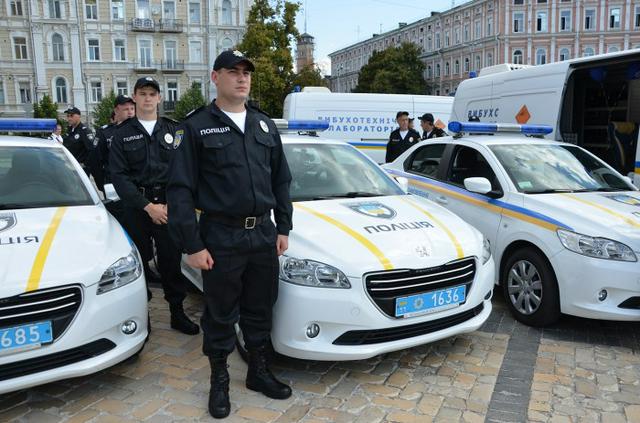 As in any other country, using common sense when travelling in Ukraine will minimize any chances of being victim of petty crime and theft. Try not to publicize the fact that you're a foreigner or flaunt your wealth, through your choice of clothing or otherwise. With the exception of Kiev, Odessa, and other large cities, Western tourists are still quite rare. As in any other country, the possibility of petty theft exists. In Kiev, make sure to guard your bags and person because pickpocketing is very common, especially in crowded metro stations. Guides have told tourists to watch certain people because they heard people say: "They look like Americans: let's follow them for a while and see what we can get."
As in any other country, using common sense when travelling in Ukraine will minimize any chances of being victim of petty crime and theft. Try not to publicize the fact that you're a foreigner or flaunt your wealth, through your choice of clothing or otherwise. With the exception of Kiev, Odessa, and other large cities, Western tourists are still quite rare. As in any other country, the possibility of petty theft exists. In Kiev, make sure to guard your bags and person because pickpocketing is very common, especially in crowded metro stations. Guides have told tourists to watch certain people because they heard people say: "They look like Americans: let's follow them for a while and see what we can get."
Robberies and scams on tourists are fairly common, especially the wallet scam in Kiev.
But if you are arrested by police or other law enforcement, do your best to inform them that you're a foreign visitor. Not many police officials speak foreign languages freely, but many people are eager to assist in translation.
Don't drink alcohol in the company of unknown people (which may be suggested more freely than in the West). You don't know how much they are going to drink (and convince you to drink with them) and what conflicts may arise after that. Also, many Ukrainians, known for a penchant for a good drink, can sometimes consume such an amount of vodka that would be considered lethal for the average beer-accustomed Westerner.
Also, it is strongly recommended to avoid individual (street) currency exchangers as there are thieves among such exchangers, that may instead give you old, Soviet-era currency or also coupons that have been withdrawn from circulation since the mid 1990s. Use special exchange booths (widely available) and banks; also be wary of exchange rate tricks like 5.059/5.62 buy/sell instead of 5.59/5.62.
The area around the American embassy in Kiev is known for the provocateur groups targeting black people, and there have been reports of such attacks on Andriyivski, the main tourist street that runs from Mykhailivska down into Podil. Particularly in rural areas, having dark skin is often a source of quiet curiosity from locals. Antisemitism is not any more of a problem than it is in e.g. Western European countries. There are two Jewish mayors elected in Kherson and Vinnitsa, and the most recently elected prime minister and president are of Jewish origin as well.
Russophobia is on the rise as a result of the Russian annexation of Crimea in early 2014, especially in the European Union-friendly western regions of the country. Russian citizens may encounter negative perceptions due to continuing war being waged (as of 2014) against Ukraine by Russian-backed separatist rebels in the eastern portion of the country. There have been ethnic clashes between Russians and Ukrainians in Odessa. On 17 July 2014, a civilian airliner was shot down by Russia-backed separatists over the conflict zone in the east of Ukraine; this has led to an escalation of economic sanctions and polarised an already-tense situation on the ground.
Anecdotal experience suggests that in Ukraine, indeed much of the former Soviet Union, people from Middle and Central Asia and Romani/Sinti people receive much closer and more frequent attention from the militsiya (police). Always have your passport (or a photocopy of the main pages if you're concerned about losing it or if you're staying in a hotel that is holding it) as foreigners are treated more favourably than others. This is not to say that it is unsafe or threatening, but it is better to be forewarned of the realities.
While there's a lot of swimming and diving attractions throughout Ukraine, local water rescue is tremendously underfunded. It is unlikely that you would be noticed while drowning, especially on the river. Use only officially established beaches.
Ukraine has some of the worst statistics for road related deaths and injuries in the world so act accordingly. Take care when crossing the roads; walk and drive defensively: be aware that traffic overtakes on both the inside and outside. Sometimes you even need to take care when using the footpaths, as in rush-hours the black, slab-sided Audi/BMW/Mercedes sometimes opt to avoid the traffic by using the wide pavements; pedestrians or not. Owners/drivers of expensive cars have been known, at times, to be more careless of the safety of pedestrians. Drivers rarely grant priority to pedestrians crossing a road unless there are pedestrian lights. Always watch out for your safety.
Pavements suffer in the same way as the roads in terms of collapsing infrastructure. Take care when walking, especially in the dark and away from the downtown areas of the main cities (a torch is a useful possession) as the streets are poorly lit, as are most of the entries/stairwells to buildings, and the street and pavement surfaces are often dangerously pot-holed. Don't step on man-hole covers, as these can 'tip' dropping your leg into the hole with all the potential injuries!
It is illegal to drink alcohol in public places in Ukraine. Despite the prohibition you can see some local citizens doing that, but don’t be misled. These are bad examples. Local policemen can insist on a bribe if they see a foreigner breaking the prohibition. So be wise and avoid unnecessary problems.
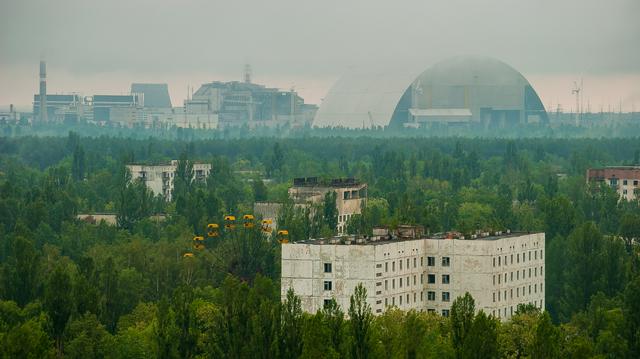
As a rule, avoid drinking tap water. The major reason for this is that water in many regions is disinfected using chlorine, so taste is horrible. Whenever possible buy bottled water, which is widely available and generally OK.
Ukraine has the highest adult HIV prevalence rate in Europe at nearly 1.5% or 1 in 66 adults. Be Safe.
There is radiation contamination in the northeast from the accident at Chernobyl nuclear power plant in 1986. However the effect is negligible unless you permanently live in Chernobyl area itself. There are even tours to the town of Pripyat' which is the closest to the station. The town is famous for the haunting scenery of blocks of apartment buildings abandoned in 1986, now standing out amid the vegetation which spawned from years of neglect.
Respect the fact that Ukraine is an independent nation. You may find that people here are sensitive about being classified as "Russians". The Ukrainians have their own ethnicity and do not like being seen as Russians.
Don't say "the Ukraine," because that usage is outdated and implies that Ukraine is a peripheral region of Russia and not a country.
Ukraine is by no means a conservative country with respect to clothing or behavior.
Stances on homosexuality verge from conservative to outright hostility.
Raising the issue of Ukraine in the context as being part of the Soviet Union may not be welcomed by the locals. The Holodomor, like the Holocaust, is a sensitive issue. It is best to not praise the Soviet Union or Joseph Stalin, Soviet leader during the time of WWII and architect of the Holodomor. Nevertheless, some Ukrainians also remember the recent period of the Soviet Union as a time of economic prosperity.
Ukrtelekom is the main telecom operator. The country code for Ukraine is 380.
The biggest mobile phone operators Kyivstar, Vodafone (formerly MTS), Lifecell.
Mobile GPRS access is available in vast majority of Ukraine's territory. 4G mobile access is steadily developing and is available now in all major cities. Public Wi-Fi hotspots are widespread throughout cities. There are plans and projects for providing mass wireless broadband access in urban open spaces, on Ukrzaliznytsia long-distance trains and in urban public transport vehicles.
When entering the country by air through Kiev airport, it may be recommendable to pick up a SIM card directly at the airport at the kiosks next to the currency exchange office. A Vodafone SIM with unlimited data for duration of one month costs 250 грн as of 2019. It's only possible to pay cash, so get cash from the ATMs right across first before attempting to purchase a SIM.
